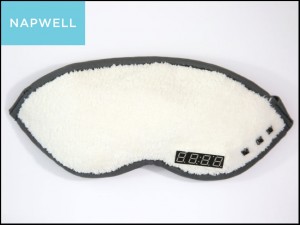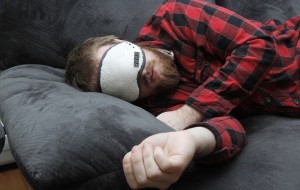Napwell Zaps ‘Sleep Inertia’
-
-
slice.mit.edu
Filed Under
Recommended
A PhD student in Health Sciences and Technology, Lee knows the power of a good nap. “I like to nap a lot. The problem with naps is, I wake up every once in a while with this terrible headache and just can’t get work done,” he says. That feeling of grogginess is called “sleep inertia” and Lee created Napwell to avoid it.

Launched on Kickstarter in December, Napwell is a programmable sleeping mask designed to wake the mask wearer with gradually increasing light. The Napwell is ergonomically designed and blocks out surrounding light like most sleep masks, but also includes a programmable sleep timer and low-profile lighting system to facilitate a gentle wake up.
While studies have shown the benefits of napping and more research is planned on Napwell, the idea behind the device is still a hypothesis. “Say you’re in a deep sleep when the Napwell starts to light up, that little bit of light initially is not going to be enough to wake you up,” says Lee. “As the Napwell gets gradually lighter, you will be moving out of deep sleep into a lighter stage of sleep. In that lighter stage of sleep, the brighter light will wake you.” No abrupt wake up from a deep sleep means no sleep inertia, he believes.
Napwell’s successful Kickstarter campaign showed Lee the wide range of people who are interested.

“What we found from Kickstarter was that a large number of our backers are interested in using the Napwell for many different applications.” Lee learned that Napwell appealed to a large group including couples who want to wake up without disturbing their partners, doctors and nurses in need of a quality nap, air travelers, and even the crew of a US Navy submarine.
“An alumnus of MIT contacted me. He’s a US Navy submarine officer,” Lee says. “Currently, these submarine crews only have their diet to regulate their circadian rhythms.” Instead of relying solely on set meal times, the crew could have their cycles regulated by simulated natural light provided by Napwell.
All these applications help to reinforce Lee’s idea that Napwell could be a widely useful product, but that’s just the beginning. Lee has ideas for future versions of Napwell that could include a mini EEG to monitor sleep patterns, though no plans have been set. Says Lee, “I love to tinker.”
For Napwell news and updates follow @Napwell on Twitter.







